Few places in the world have a more exotic feel to their name than French Polynesia. This tiny island nation is located halfway between the USA and Australia, right in the middle of the South Pacific Ocean.
It is a tropical paradise that is often used as a romantic honeymoon destination for some or as an underwater adventure for scuba divers around the world.
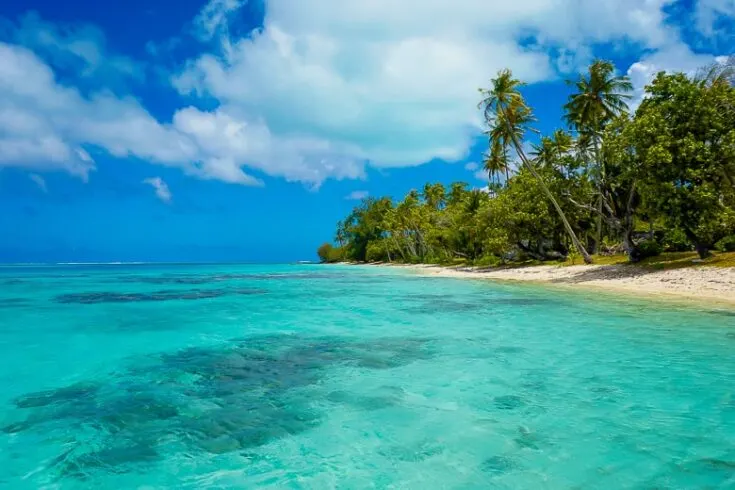
French Polynesia has something to offer to everyone, and after reading this travel guide, you’ll be ready to pack your bags.
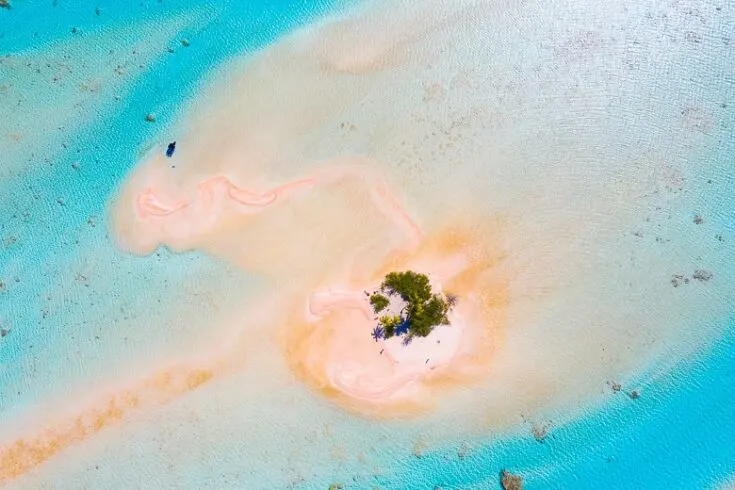
Visiting French Polynesia
I visited French Polynesia for nearly a month by the end of 2018. During my trip, I spent time in Tahiti, Bora Bora, Moorea, and Fakarava.
While this is only a fraction of the islands available, I had some amazing experiences and also one hard-learned lesson – that there’s nowhere else in the world quite like French Polynesia.
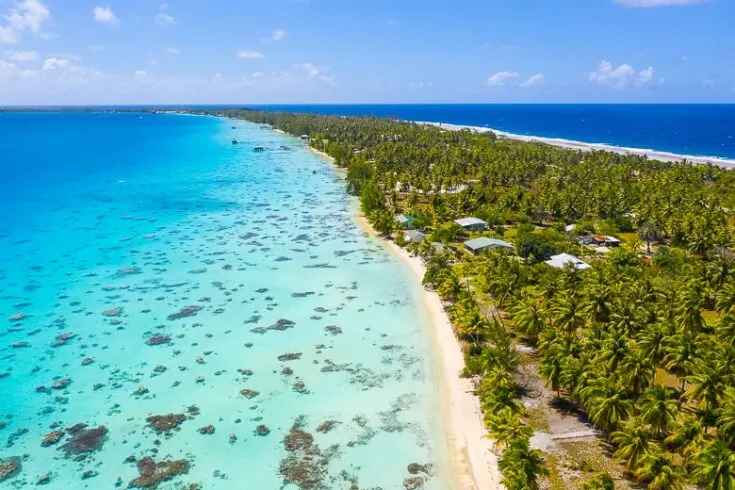
Now it’s time for you to have your own adventures.
But before you can go, you should make sure that you are prepared with all the information you need.
Getting to French Polynesia
Knowing how to travel to French Polynesia is the first step. The remoteness of the country makes flying into this paradise. The only option – unless you arrive by your own sailboat.
Fa’a’ā International Airport (PPT) is the only international airport in French Polynesia. It is located just outside Papeete in Tahiti, the capital and biggest city in French Polynesia.
Fa’a’ā International Airport (PPT) is served by nine airlines that offer international flights.
Air France (SkyTeam): Los Angeles – Lax, Paris – Charles De Gaulle.
Air New Zealand (Star Alliance): Auckland.
Air Tahiti: Rarotonga Cook Island.
Air Tahiti Nui: Paris – Charles De Gaulle, Tokyo – Narita, New Zealand – Auckland, Los Angeles (LAX).
Aircalin: Nouméa – New Caledonia.
French Bee: San Francisco, Paris (Orly Airport).
Hawaiian Airlines: Honolulu, Hawaii.
LATAM Chile (OneWorld): Easter Island, Santiago de Chile.
United Airline (Star Alliance): San Francisco.
There are flights from Europe with Air France through Los Angeles (LAX) or with Qatar Airways that has a codeshare agreement with Air New Zealand through Auckland. These are the two most accessible options.
Note: If you are stopping by New Zealand on your way to French Polynesia, be sure to check out this post about the best campsites in New Zealand.
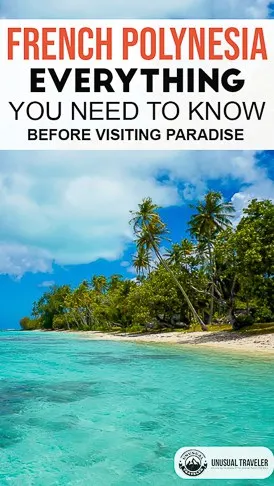
How to Get to French Polynesia? Visa Requirements
French Polynesia (as the name suggests) is a French overseas territory under the constitution of the French Republic (police, army, and immigration are the same as in mainland France).
So arriving in French Polynesia is just as simple as arriving in France for Citizens of western countries.
A visa is also not needed for citizens of all countries in Latin America, Australia, New Zealand, plus Japan, Taiwan, Malaysia, Singapore, and South Korea.
You will be able to stay on the islands for up to 3 months like this.
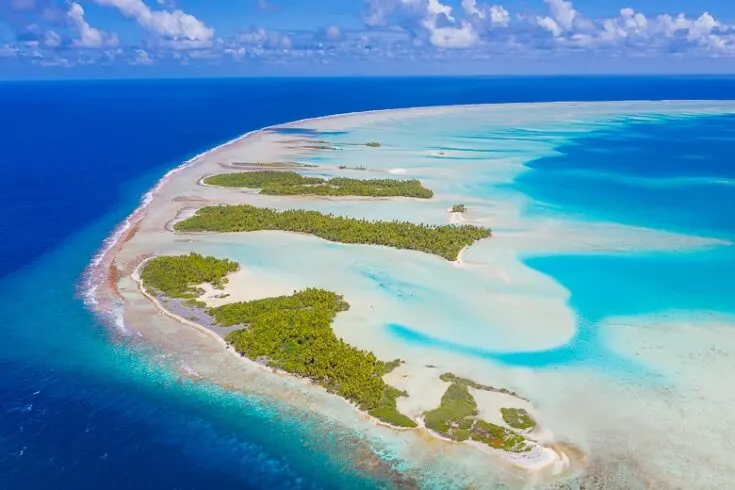
Citizens from countries not available for visas on arrival will have to apply for one in advance from a French Embassy or Consulate on the island. The normal fee is 9 euro. A return ticket is required for everyone, and you might get asked for it upon arrival at immigration.
Getting Around French Polynesia?
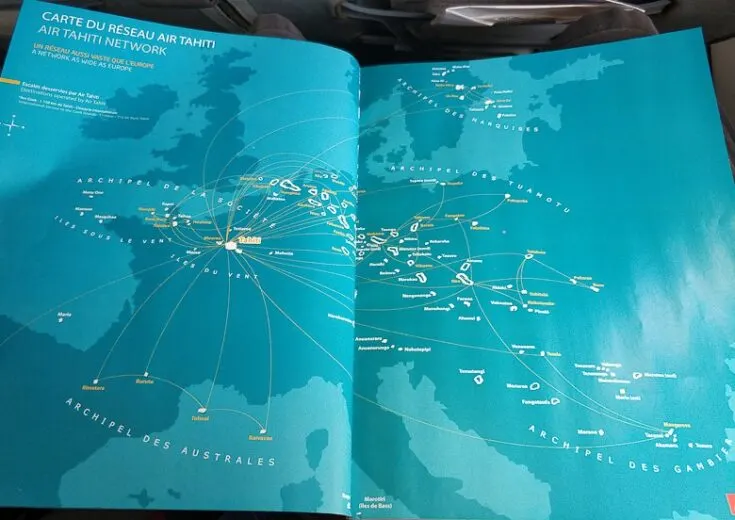
It should be to no one’s surprise that traveling around here will take a bit of planning.
Especially since the only travel around is by flights, slow-going ferries, or hitchhiking one of the thousands of privately owned sailboats that cruise around the crystal clear waters.
It’s important to know that while there are local flights between the islands inside each archipelago, you will have to transit through Tahiti when traveling from one archipelago to another.
Be aware that you will often have to stay a night in Tahiti before taking your onward flight to the next archipelago early in the morning. Flights to smaller islands and atolls are often booked out months in advance.
Archipelagos in French Polynesia
French Polynesia is made up of five archipelagos.
There are only about 280,000 lucky islanders living on 67 inhabited islands and atolls – with over 70% of the population concentrated on the big island of Tahiti.
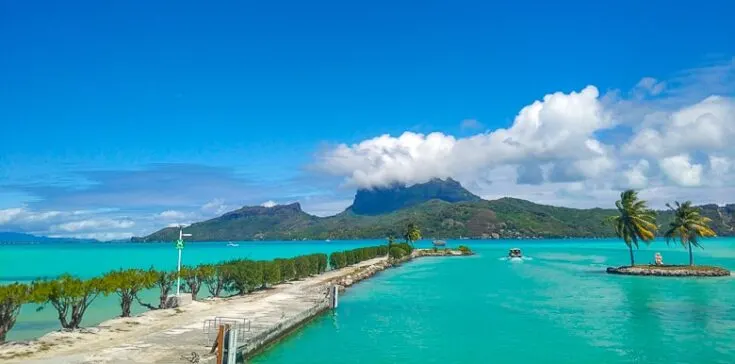
Marquesas Archipelago
The best archipelago to visit for hiking and horseback riding is Marquesas.
You can go hiking for days, take a swim in the tallest waterfall on the islands, or just watch the best craft makers in all of French Polynesia.
The Marquesas is also famous for its Polynesian tattoo culture. And Polynesian dances
Society Archipelago
The most popular archipelago, Society, is home to famous islands like Tahiti, Moorea, Bora Bora, and Huahine.
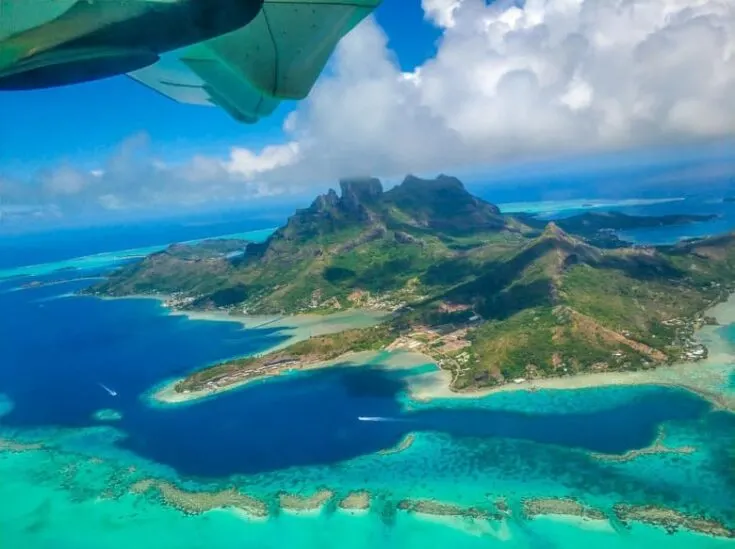
Tuamotu Archipelago
Home to famous atolls like Rangiroa, Tikehau, and Fakarava, Tuamotu is home to the best Scuba Diving in French Polynesia.
The waters here are classified as a UNESCO biosphere reserve.
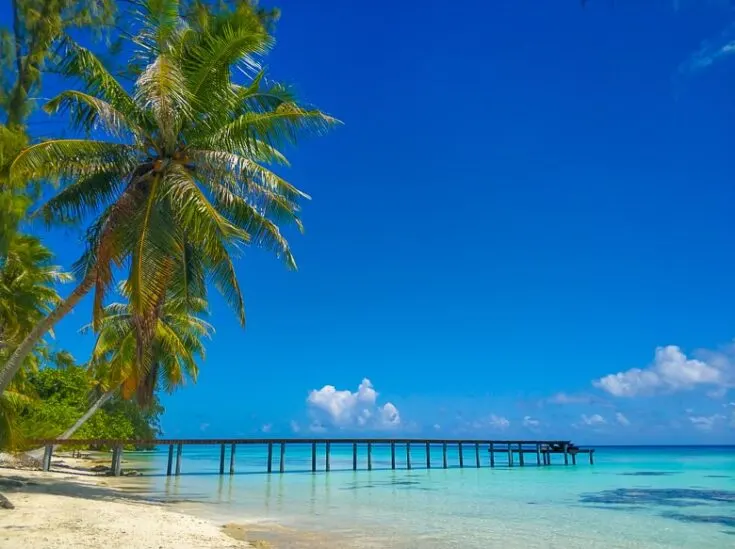
Gambier Archipelago
Gambier Archipelago is located furthest away from Tahiti and home to only 1,319 people. It is famous for producing the finest pearls in French Polynesia and also for being home to the oldest church in the country.
There is excellent hiking and virgin nature. This is the least visited of all the archipelagos in French Polynesia. There are no banks or ATMs here.
Austral Archipelago
This archipelago is home to the most authentic Polynesian culture in all of French Polynesia.
It is home to 6,300 people and is said to have the clearest water in all of the islands – a real off-the-beaten-path destination.
The Austral Islands are the southernmost group in French Polynesia.
The tiny Raivavae island located here is said to be the most beautiful in the whole of the South Pacific.
Where to Go in French Polynesia?
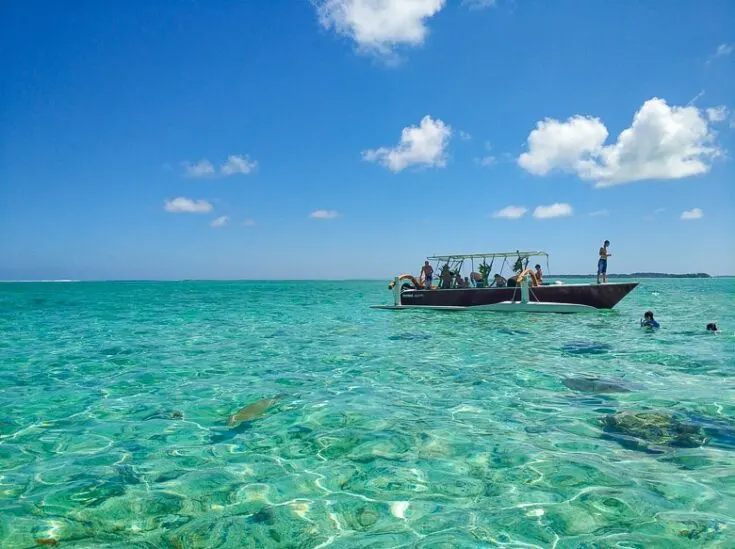
Now that you know about the different archipelagos, it’s time to choose your favorite islands.
Deciding on which islands (or atolls) you want to include during your French Polynesia visit is highly dependant on your budget, flight schedule, and what activities you want to do during your holiday.
The following islands are some of the best for certain activities:
Best For Resort Holiday: Bora Bora and Moorea
Best For Beach Holiday: Tikehau, Huahine, and Moorea. All the good beaches on Bora Bora are located in private resorts.
Best For Scuba Diving: Fakarava, Nuku Hiva, and Raìatea (only proper wreck diving in French Polynesia)
Best For Jet Ski Tours: Bora Bora has many private jet ski tours available.
Best For Hiking: Tahiti, Bora Bora, and the Marquesas islands
Best For Whale Watching: Moorea, Tahiti, and Rurutu (from early August to late October). The best way to see the whales and other aquatic animals is a private whale watching tour that leaves from Moorea.
Best For Overall Activities: Moorea has got the most to offer, especially if you are looking for a private snorkeling tour – but it’s also the most touristy island.
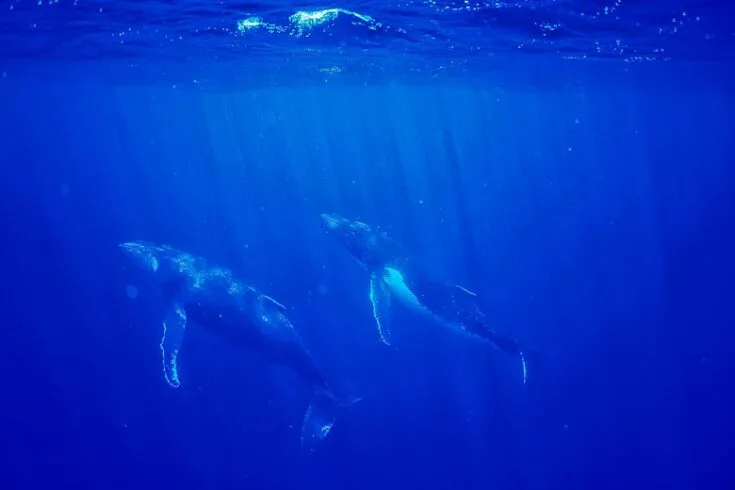
Where to Stay in French Polynesia?
Most people will think of overwater luxury bungalows or a tropical hotel when planning a trip to French Polynesia, but that kind of accommodation is only available on a few islands (and they can come with quite a hefty price tag).
The most common style of accommodation here is small pensions and guesthouses run by small local Tahitian families. Most pensions are not listed online, so often, the only way to get a room is either by calls when you are here or simply by just showing up.
Be sure to pick up a free copy of Guide Des Hotels De Familles from the tourist information at either the airport or in Papeete town. All pensions and guesthouses located around French Polynesia are listed in this book.
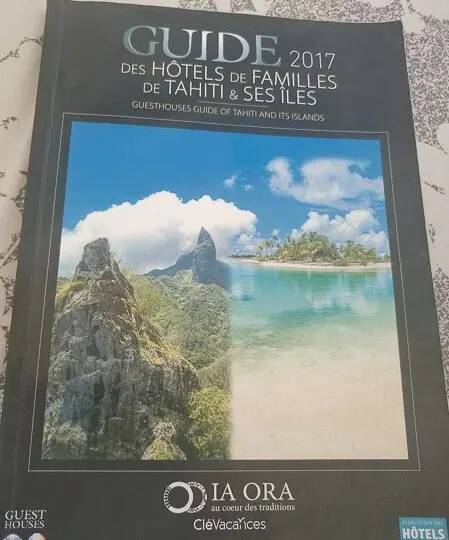
Money in French Polynesia
The local currency in French Polynesia is CFP (French Pacific Franc).
The Euro is widely accepted for payment in hotels. Western bank cards, Visa, and MasterCard are accepted “everywhere”.
Personally, I paid for everything on this trip (like hotels, diving, etc.) with my bank cards.
There were a few exceptions when I paid with hard cash in supermarkets.
Be aware that everything is very expensive here in this part of the world. A month of traveling in French Polynesia cost me more than 4 months of traveling around in south-east Asia.
While it’s possible to do it fairly cheap, French Polynesia is far from a budget-friendly destination.
The best way to cut expenses is by bringing a tent to camp and cooking for yourself when staying in guesthouses. You should still budget between 100 – 150 euros ($120 – $175) a day.
Internet in French Polynesia
Internet in French Polynesia was much slower and limited than I would expect from a country like this. While all guesthouses and most restaurants had free wifi, the speed was very slow – sometimes ridiculously slow.
If you want to buy a local sim card, Vodaphone is your only option.
They sell tourist sim cards for 42 euro or 5000 CF ($50). You will receive 2GB of data, 30min local calls, and 30min international calls.
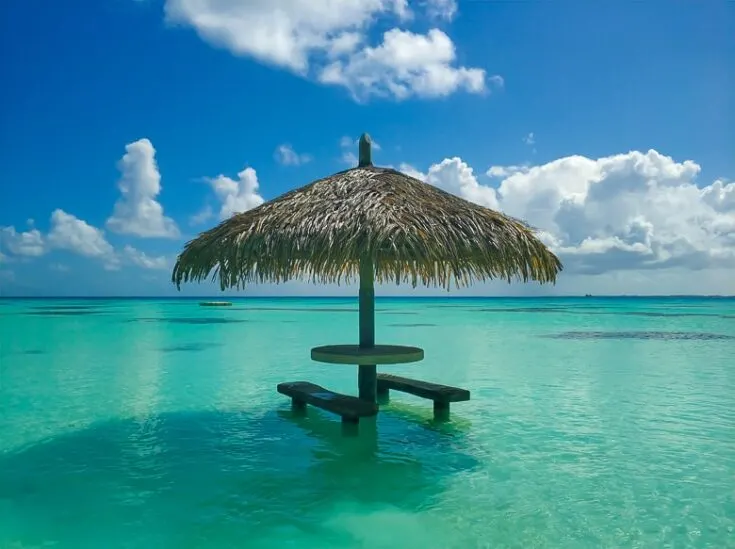
But be aware that 4G Connection is ONLY Available when visiting Tahiti, Moorea, and Bora Bora. On other islands and atolls (like Fakarava), you will only get an EDGE connection if you are lucky. Most of the time, you will not get a connection at all.
But after all, why would you spend all your time online when you are in one of the most beautiful places on earth.
Electricity on the Islands
Apart from internet and phone calls, you should always consider the electrical requirements of your holiday destinations.
You will find both 110 and 220 volts here, depending on the hotel or resort.
Note: European standard 220V seemed to be the most popular.
Is French Polynesia safe?
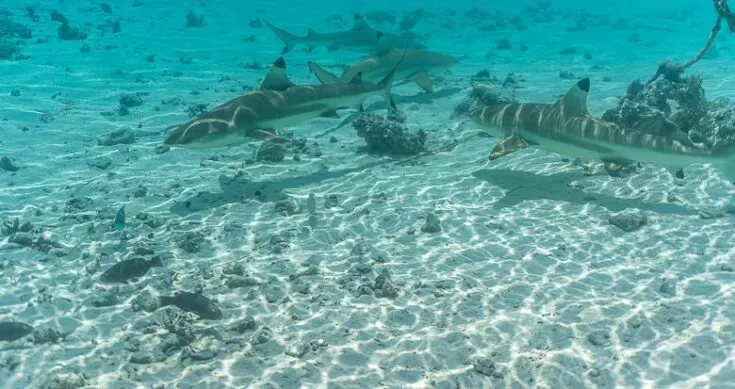
French Polynesia is one of the safest places in the world, generally speaking, but petty crime (such as pickpocketing and purse snatching) does sometimes occur. I did hear of a lot of cases of cars and tents that had been broken into on Moorea.
Mosquitos in French Polynesia
Although there is no malaria in this part of the world, there are occasional dengue fever and chikungunya outbreaks spread by mosquitoes. All islands I visited had tons of mosquitoes in the evenings.
Diving Safety
Dive insurance is highly recommended if you decide to go scuba diving. There are some weird laws in Bora Bora and the other islands. Like, for example, you are forbidden to dive deeper than 27 meters anywhere on the islands.
Reef Sharks are normally harmless, but they can become dangerous in the presence of food.
They also tend to be more aggressive if encountered in open water rather than on the reef. It’s not unheard of for reef sharks to bite people that are wading through shallow water.

Drinks & Alcohol
Who doesn’t dream of sipping on a cocktail while watching a sunset or having a local ice cold beer on some of the best beaches in the world? Well, you’re in luck! French Polynesia produces everything from rum, beer, and (to everyone’s surprise) even its own wine.
The wine is produced from the only coral soil growing grapes in the world.
Note: If you’re a beer lover, then you need to check out my beer guide to French Polynesia.
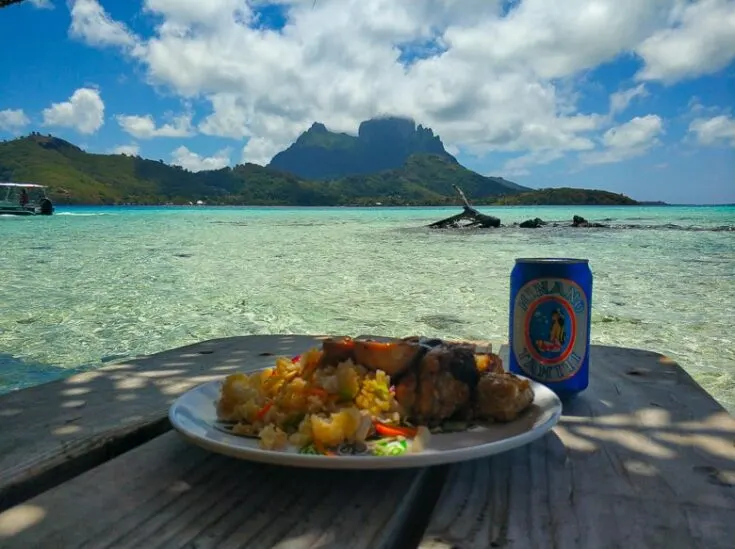
Things You Should Pack
What you should pack largely depends on which island you decide to visit and the rest of your travel itinerary.
When going to Tahiti or Moorea, “everything” will be available, while on most (all) smaller islands, there will be nothing but the basics.
The four most important things to make sure you have with you are:
- Snorkeling gear (if you plan on diving this can save you a lot of time and money)
- Bug spray
- Sunblock
- Flashlight/headlamp.
French Polynesian Language
French is the only official language in French Polynesia, but the Tahitian language is also spoken by everyone in various dialects from one archipelago to the next.
When I researched for my trip to French Polynesia, most websites and blogs say that few people spoke English outside of Papeete and Bora Bora. But personally, I had absolutely no problem with just English during my travel to French Polynesia.
It is, however, useful to know some basic Tahitian words. It will also put a smile on the local’s faces when you try to pronounce their words.
Here are some of the most useful Tahitian phrases:
Welcome – Maeva
Hello – Ia Orana
Yes – Oui
No – Non
Thank You -Mauruuru
Beach – Tahata’s
Sun – Mahana
Good – Maitaí
No Problem – Àita pea pea
Home – Fare
Money – Moni
Cheers – Manuia
Ultimate French Polynesia Travel Blog
There you have it, everything you need to know to travel to this tropical paradise. Now that you know how to go to French Polynesia, it’s time to pack your bags.
A world filled with breathtaking beaches, uninhabited islands, and some of the best diving in the world awaits you.
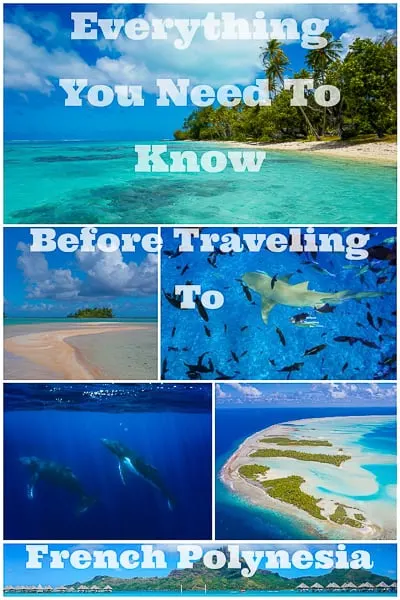

14 Places You Need to Visit in 2019 | Pursuing Lemons
Monday 20th of May 2019
[…] Find out more: French Polynesia Everything You Need To Know Before Visiting Paradise […]